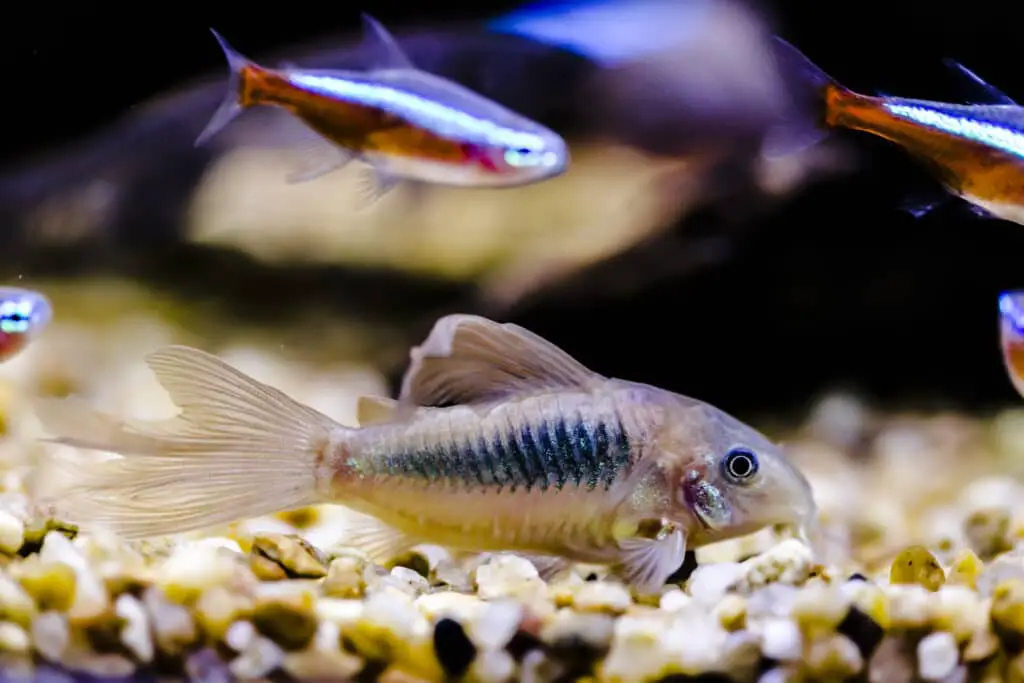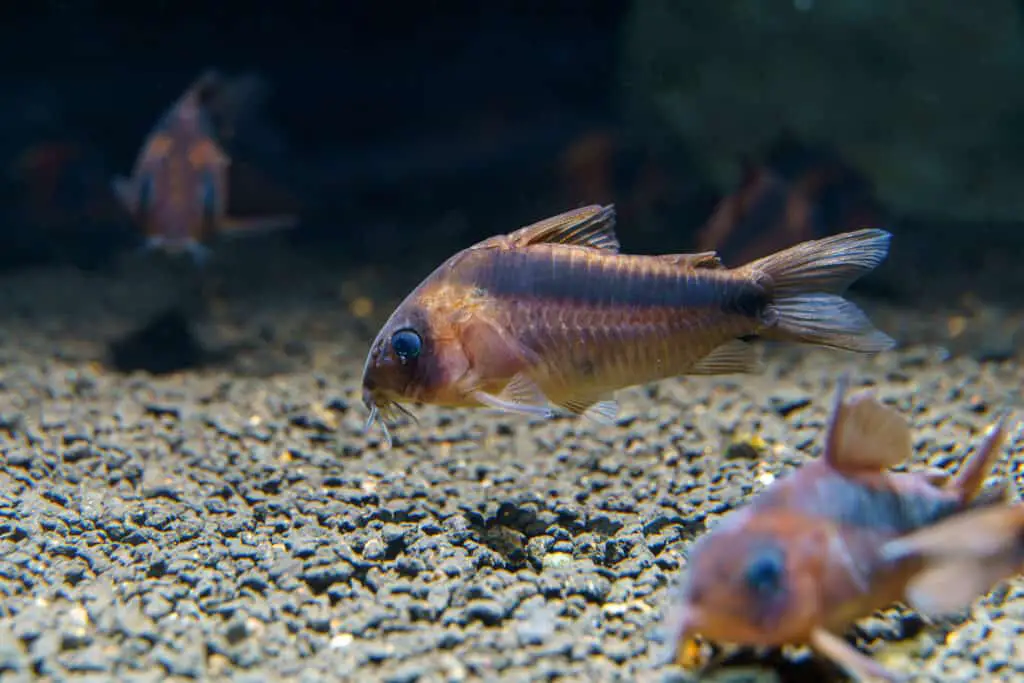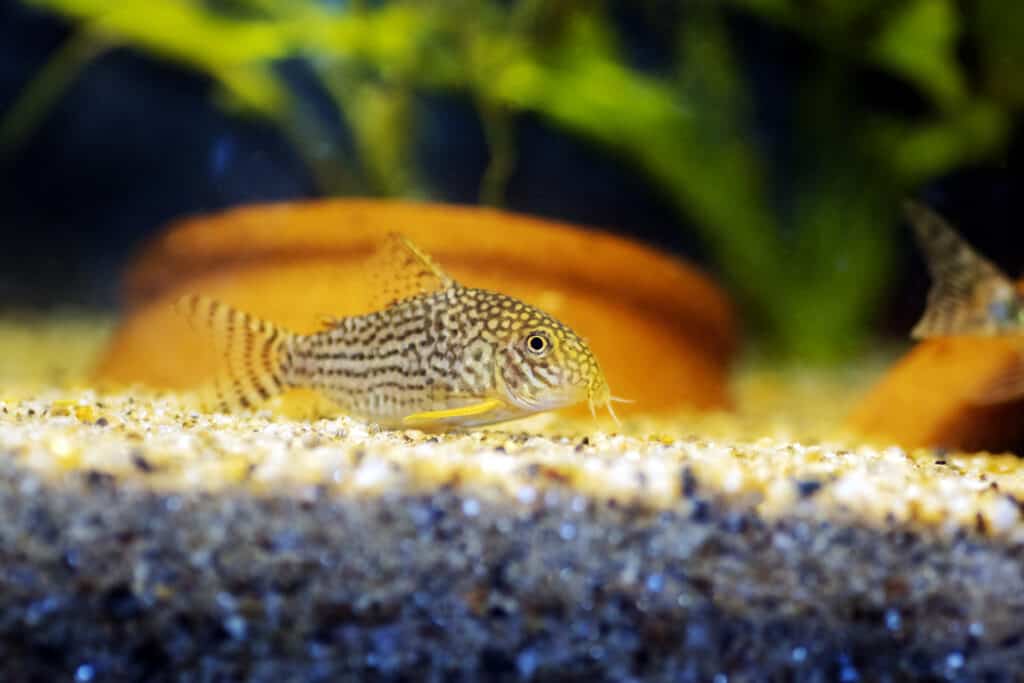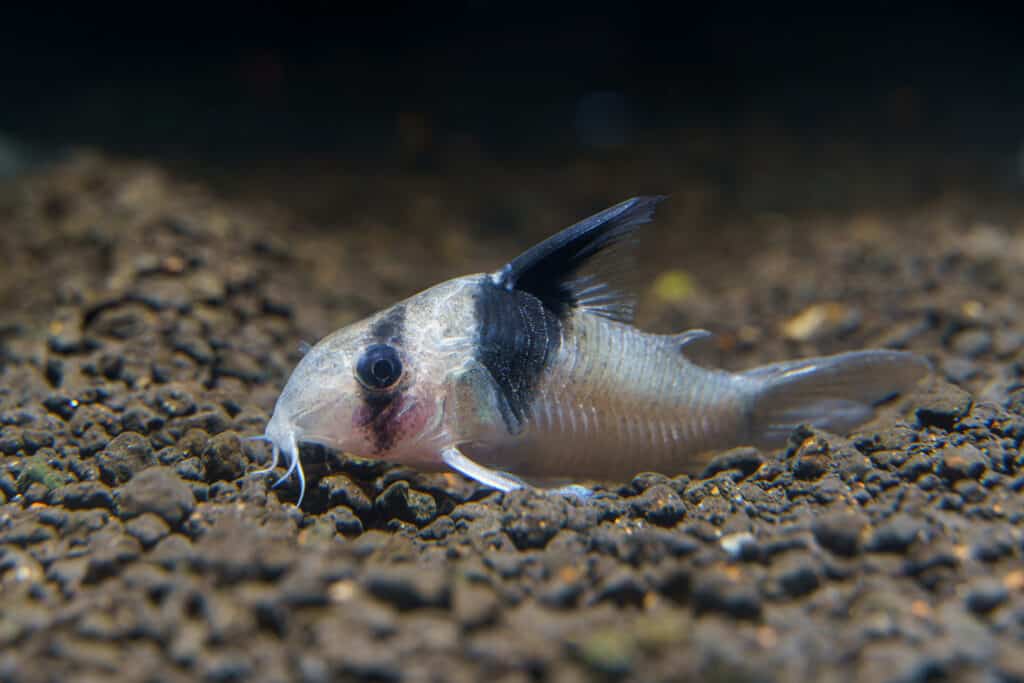
When setting up the perfect environment for Corydoras, the fun and playful bottom dwellers of the fish-keeping world, choosing the right substrate is an important factor in laying a strong foundation for the overall habitat.
It is often a popular choice to use gravel as the substrate for an aquarium, but the question is often asked if it can be suitable for the well-being of corydoras, being that they are bottom dwellers, and enjoy digging in the substrate for their food.
Gravel can be used as the substrate for corydoras, with some considerations made. It is important to use smaller, smoother gravel since this limits the amount of food that can get trapped between the gravel and reduces risks of cuts and barbel damage.
Let’s dive deeper into the aspects to consider, and look for in choosing gravel for your corydoras, along with a possible alternative.

Why Gravel Can Work For Corydoras
Though corydoras are bottom dwellers, often in the wild, the environments they are found in often include some sharp and rocky substrate.
What this means is that many corydoras can adapt to a variety of substrates, and can live on tougher substrates like gravel.
If the desire is to use gravel as your substrate, remember to look for smaller pieces of gravel that are more rounded, and smoother.
It isn’t a guaranteed problem if these precautions in choice aren’t made, but what these options provide is the reduction of risk of if the corydoras could be cut or scraped while swimming on top of the gravel, and provide a possible reduction in wear and tear on their barbels.
Risks of Using Gravel For Your Corydoras
Larger gravel gives the highest amount of risk to your corydoras getting injured, with the main factor being that the larger pieces often mean larger gaps with a greater possibility of food getting trapped between the pieces of gravel.
Since corydoras naturally dig into the substrate looking for food, they will try to dig into the pieces of gravel to reach that trapped food.
This can lead to damage to themselves, or added wear and tear on their barbels.
Another thing to remember when considering the substrate is that in the wild, they can move to different areas, providing them the option to have different substrates.
In your aquarium the substrate chosen is all they will have access to, so there could be added risk because their ability to move to a different substrate is gone.

Are There Alternative Substrates to Consider
Sand is the other substrate type that is often used for corydoras. What this substrate provides is a looser and less sharp bed that provides corydoras the ability to feed more naturally.
Typically corydoras will grab some sand in their mouth and sift through it, push the sand out to the side, and take out the food particles.
Corydoras will also be found digging into the substrate, which is something they can’t do in gravel but can do in sand.
Because the sand is not as rough as gravel, it does reduce the risk of cuts to the bellies of the Cories, as well as lower the possible wear and tear on their barbels.
Picking the Right Gravel For Your Corydoras
Picking the correct gravel can greatly increase the success you have with your corydoras thriving.
Since the most optimal substrate for corydoras is sand, the goal is to get closer to sand with your gravel choice.
Sand provides a smoother surface, so you should opt for smoother gravel, this means going for a river rock or pea-type gravel can be the right choice, as it is naturally smooth.
Sand also is very compact, and doesn’t allow food particles to get into it, and in most cases, any food covered by the sand can be dug out by bottom dwellers and other scavengers.
Food that is stuck in the substrate that is left can greatly diminish the water quality in the tank, and in the case of corydoras, who like to dig, can have them wanting to go through the gravel which can cause injuries.
To get the most compact layer of gravel, opt for a smaller-sized gravel.
This will allow the gravel to have a lot less space between, and remove possible pockets of space that can trap food.

Why Have Substrate in Your Corydora Tank
A case could be made to consider a bare bottom tank, as it takes out the risks of damage to the corydora’s barbels, and being scraped.
However, having a substrate of any kind greatly benefits the tank.
The substrate boosts the tank’s overall aesthetic appeal, as well as playing into making the tank look more natural.
Plants are another beneficial aspect of a tank that can improve the overall happiness of the tank inhabitants, providing hiding spaces, and helping them maintain good water quality.
Gravel in its own right can allow better water flow for filtration.
And with all substrates, they will also provide an area for beneficial bacteria, and microorganisms to grow, for an overall better tank ecosystem.
Final Thoughts
When it comes to picking a substrate for your corydoras, there are many factors involved, including aesthetic choices, and what may benefit other tank inhabitants, plants, and decor.
Though gravel may not be the optimal choice for corydoras, it does not mean that corydoras can’t live, and thrive with gravel.
If you choose to use gravel, remember to look at the size and smoothness before making a choice.
This will give you the best opportunity to provide a good and healthy environment for your corydoras as it will help eliminate food particles getting stuck, reducing the risk of water quality issues, as well as helping reduce wear and tear on the corydoras bodies and barbels.
If interested in learning about the most optimal setup for your corydoras, be sure to check this article out.
